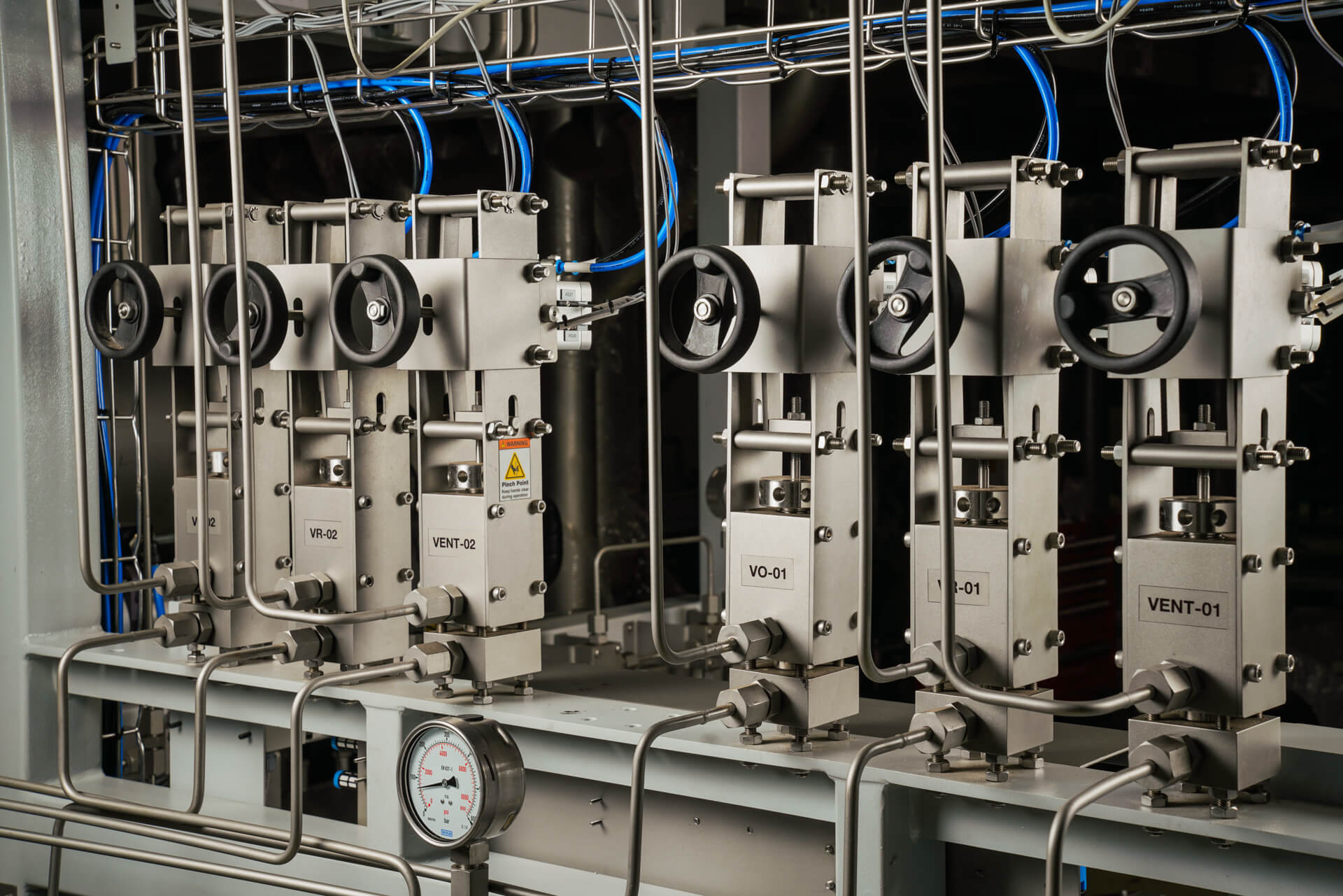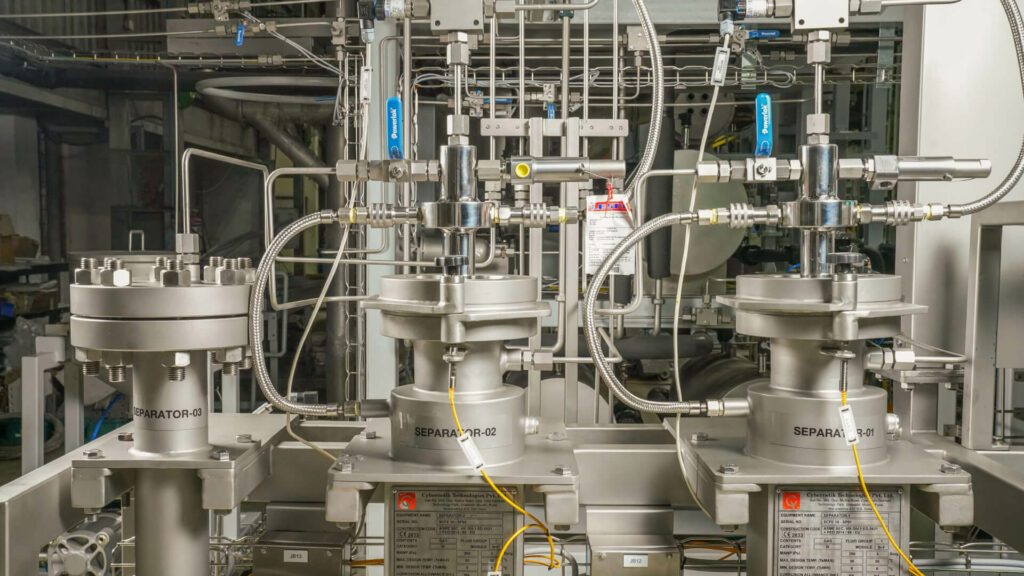In the high-stakes world of botanical extraction, where precision and throughput dictate profitability, the supercritical CO₂ extraction process stands out for its purity and sustainability. Using food-grade CO₂ in its supercritical state—above 31.1°C and 73.8 bar—this method dissolves target compounds like cannabinoids, terpenes, and essential oils from plant biomass with gas-like diffusivity and liquid-like solvating power, leaving no toxic residues. For mid-scale operations, Buffalo Extraction Systems' Level 2 co2 extractor emerges as a versatile powerhouse, featuring 25-liter extraction vessels configurable for 2 or 3 units. At its core lies the Series Extractor Usage Option, a configurable mode that sequences CO₂ flow through multiple extractors, fundamentally elevating efficiency in supercritical CO₂ extraction machines.
This option isn't just an add-on; it's a paradigm shift for users of co2 extraction equipment seeking to scale from pilot batches to production runs. Traditional single-vessel setups often bottleneck at reload times and inconsistent solvent exposure, but the Series mode—integrated with automatic changeover valves and a closed-loop co2 extraction system—enables seamless sequential processing. Paired with the proprietary SCADA Systems for recipe-based control, it transforms a co2 extraction machine into an intelligent, responsive asset. As demand for clean-label extracts surges in pharmaceuticals, nutraceuticals, and food industries, understanding why this feature revolutionizes Level 2 supercritical fluid extraction equipment is crucial. For those scouting a co2 extraction machine for sale, the Series option could tip the scales on ROI, especially when weighing supercritical CO₂ extraction machine price against long-term gains.
The Mechanics of Supercritical CO₂ Extraction in Level 2 Systems
To grasp the Series option's impact, consider the foundational workflow of a Level 2 supercritical CO₂ extractor. Biomass—milled, pelletized, or granulated—is loaded into stainless-steel extraction vessels rated for 350-650 bar (5000-9500 PSI) and temperatures up to 110°C. CO₂, sourced from a recovery tank, is compressed by a high-pressure pump (flow rates of 150-350 LPH) and heated to supercritical conditions. This fluid percolates through the material, selectively extracting lipophilic compounds based on tunable pressure and temperature profiles.
In a standard closed loop CO₂ extractor, the solvent-laden stream then flows to dual separators, where staged pressure reductions (controlled individually) fractionate the extract—e.g., waxes in the first, oils in the second. The "spent" CO₂ vents as gas, condenses, and recycles, minimizing waste in this eco-friendly co2 extract machine. Level 2 systems shine with 2-3 vessels, proprietary sealing for leak-free operation, and co-solvent pumps for enhanced polarity. Yet, efficiency hinges on configuration: Single mode runs vessels independently or in parallel, ideal for small, varied batches but prone to idle time during changeovers. Enter Series mode—a game-changer that chains vessels sequentially, allowing continuous CO₂ flow while one loads/unloads, slashing downtime and amplifying throughput in supercritical CO₂ extraction equipment.
Buffalo's design incorporates unique extractor closures for rapid batch swaps and high-pressure changeover valves, ensuring the Series option operates without flow interruptions. Certifications like CE, PED, ASME, and GMP underscore its reliability, making it a staple for compliant operations. For buyers eyeing co2 extraction machine price points (often in the mid-six figures), this configurability justifies the investment by directly targeting efficiency bottlenecks.
Why the Series Extractor Usage Option Transforms Efficiency
The Series mode's brilliance lies in its ability to optimize every facet of the extraction cycle, from solvent utilization to labor allocation. Here's how it redefines Level 2 performance in a co2 extraction system:
1. Maximized Solvent Efficiency and Extraction Yields
In Series configuration, supercritical CO₂ cascades through multiple 25-liter vessels in sequence, extending contact time with biomass without pausing the pump. This sequential percolation—enabled by automatic valves—ensures fuller saturation of the solvent, extracting more compounds per pass compared to Single mode's isolated runs. For instance, terpene-rich fractions from the first vessel enrich the stream for cannabinoid pulls in subsequent ones, yielding higher-purity, full-spectrum extracts.
This matters profoundly in a supercritical CO₂ extraction machine, where CO₂'s tunability shines: lower pressures (e.g., 200 bar) in early vessels target volatiles, ramping to 400 bar downstream for denser solubles. Result? Enhanced kinetics mean shorter cycle times—often 20-30% faster batches—and superior yields, critical for high-value crops like hemp or hops. The closed-loop recycling amplifies this: recovered CO₂, purified to food-grade standards, re-enters with minimal loss, reducing operational costs in co2 extraction equipment. Users report consistent extract qualities, minimizing re-runs and waste, which is a boon for R&D in custom formulations. When integrated with the SCADA Systems recipe automation, operators preload multi-stage profiles, fine-tuning via sliders for optimal solvating power—turning a c02 extraction machine into a yield-optimizing beast.
2. Reduced Downtime and Seamless Scalability
Downtime is the silent killer in production-scale supercritical fluid extraction equipment, often stemming from manual vessel swaps under high pressure. The Series option counters this with Buffalo's proprietary changeover valves and rapid-closure designs, allowing one vessel to unload while others process. In a 3-vessel setup, CO₂ flows uninterrupted from Vessel 1 (extracting) to Vessel 2 (mid-cycle) to Vessel 3 (fresh load), creating a near-continuous pipeline.
This staggered operation—unique to Series mode—boosts uptime dramatically, especially in batch durations of 2-6 hours. For a co2 extraction machine for sale targeting mid-tier labs, this scalability means handling 50-150 kg of biomass per shift without proportional staff increases. Automation via the SCADA Systems remote monitoring dashboard tracks valve states and flow metrics in real-time, alerting to isolations or clogs via push notifications. No more tethered to a control panel; supervisors oversee from the floor or off-site, slashing response times. In closed loop CO₂ extractor environments, where CO₂ recovery efficiency is paramount, Series mode maintains steady recirculation rates (up to 350 LPH), preventing pressure dips that plague parallel setups. Industry adopters note halved changeover times, freeing resources for quality checks or multi-product runs—essential for agile markets like CBD isolates or botanical perfumes.
3. Cost Savings and Sustainability Through Resource Optimization
Efficiency isn't just speed; it's economics. The Series option curtails CO₂ consumption by maximizing each cycle's solvent load, leveraging the fluid's reusability in a zero-waste loop. With non-flammable, non-toxic CO₂, operations stay safe and GMP-compliant, avoiding solvent disposal fees common in ethanol systems. Superior sealing tech minimizes leaks, extending component life in high-pressure environments, while the co-solvent pump (for ethanol or propane boosts) integrates flawlessly for hybrid extractions.
From a sustainability angle, this mode aligns with green mandates: lower energy for heating/pumping due to optimized flows, plus anti-hydrolysis properties preserving delicate activities. For supercritical CO₂ extraction machine price considerations, the payback accelerates—ROI in under 12 months via reduced raw material waste and energy bills. The SCADA Systems predictive maintenance logs seal wear and valve cycles, preempting failures that could idle a $300,000+ co2 extraction system. In essence, Series mode turns fixed costs into variable advantages, empowering users to scale sustainably without overhauling infrastructure.

4. Enhanced Precision and Operator Empowerment
Precision defines supercritical CO₂ extraction, and Series mode elevates it through integrated intelligence. The SCADA Systems—touch-optimized for iOS/Android—syncs with PLCs for gesture-based recipe execution, visualizing Series flows as interactive diagrams. Customize thresholds: e.g., auto-switch vessels at 90% saturation via inline sensors. This user-centric design cuts training from weeks to days, democratizing access for global teams.
In a co2 extract machine, where variables like chiller temps (down to -20°C) impact fractionation, remote oversight prevents drifts, ensuring batch-to-batch consistency. Data exports to CSV enable yield analytics, refining processes for niche extracts like low-viscosity resins collected effortlessly in specialized separators. For advanced users, AR overlays guide maintenance on high-pressure fittings, further minimizing errors.
Broader Industry Ramifications
The Series Extractor Usage Option positions Level 2 systems as Industry 4.0 leaders in co2 extraction machines, fusing IoT with proven supercritical tech. It addresses scalability pains—throughput without complexity—while upholding purity standards for pharma-grade outputs. As regulations tighten on solvent residues, this closed-loop, food-grade approach future-proofs investments.
For startups or established facilities, it's a no-brainer: higher efficiency translates to competitive edges in pricing extracts. When evaluating supercritical CO₂ extraction equipment, prioritize configurability—the Series mode isn't optional; it's evolutionary. In a landscape where every gram counts, Buffalo's innovation hands operators the keys to unlocked potential, making Level 2 not just efficient, but transformative.




